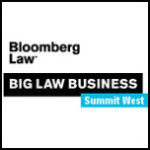Lawyers in corporate legal departments and attorneys at law firms both say the amount of outsourced legal work has increased over the past year, but they disagree by how much, according to the International Association of Defense Counsel’s (IADC) second annual Inside/Outside Counsel Relationship Survey.
This discrepancy, along with the survey’s finding that in-house and outside counsel continue to rate themselves higher than they rate each other, points to noteworthy and enduring disconnects in communication and in their understanding of each other’s challenges.
“The purpose of the 2016 Inside/Outside Counsel Relationship Survey was to better understand current trends in outsourcing legal services and to gauge how in-house counsel and outside lawyers are getting along, especially compared to the findings from the IADC’s 2015 survey,” said John T. Lay, Jr., IADC President and a shareholder at Gallivan, White & Boyd, P.A. “The survey results demonstrate that both sides still require greater understanding and support in certain key areas.”
Administered by a third party, the IADC online survey includes responses from 346 corporate attorneys currently working in the legal department of a company/corporation and 333 attorneys employed at a law firm or private law practice. Most respondents hold leadership positions within their organizations. A 2,500 member, invitation-only organization, the IADC conducted the survey in its role as a leader in many areas of legal reform and professional development.
Notably, sixty-one percent of inside counsel survey respondents reported an uptick in the amount of work they were contracting out to law firms over the last 12 months, while only 39 percent of outside counsel say their work from corporate clients increased over the same period. Compared to the previous 12 months analyzed in the 2015 survey, this year 8 percent more inside counsel and 12 percent more outside counsel reported growth in the overall amount of outsourced legal work. Also, slightly more than half of in-house respondents said they expect outsourcing to continue to grow over the next 12 months.
“The significant variance in opinion between the two groups on how much work is going to law firms tells us that companies are consolidating more work with a smaller number of law firms and that’s a trend that is having a significant impact on our industry,” said Andrew Kopon, Jr., IADC President-Elect and a founding member of Kopon Airdo, LLC.
The survey also revealed disagreements between inside and outside counsel on how well each group is doing in managing their client-vendor relationships and understanding of each other’s business goals and operations. Billing and budgets, unsurprisingly, are front and center among the survey respondents’ areas of concern. In-house counsel gave outside counsel their lowest grades concerning offering timely and realistic budgets and discounted fees/fixed fees/alternative arrangements when requested.
One in-house survey respondent noted that outside counsel “put multiple partners on the same matter; exceed budgets; do not offer fee arrangements that are linked to value.” Conversely, an outside counsel respondent suggested that in-house counsel should “eliminate budget requirements when a case is new and remove absurd billing guidelines.”
Communication also was called out by both inside and outside counsel respondents as an area of concern. One outside counsel respondent suggested that lawyers in legal departments should communicate “regularly and clearly on what the objectives are and the methods to be used to achieve those objectives.”
In-house survey respondents cited outside counsel communication failures including not returning phone calls and emails in a timely manner, insufficient updates on case developments and strategy changes, and “taking steps without first securing clearance from legal department.”
Inside counsel rated attorneys at law firms highest for their expertise and how well they work with the in-house legal department. Attorneys at law firms were most complimentary when rating in-house attorneys on responsiveness to questions, feedback, or requests for authorization.
To access a PDF of the 2016 Inside/Outside Counsel Relationship Survey results, visit http://www.iadclaw.org/assets/1/7/2016_IADC_Inside_Outside_Counsel_Relationship_Survey.pdf.
 A Dallas Morning News profile of Dallas Cowboys general counsel Jason Cohen tells how the New Jersey native thought his job interview with team owner Jerry Jones was going pretty well until Jones asked him if he was a Cowboys fan. He confessed to being a Giants fan.
A Dallas Morning News profile of Dallas Cowboys general counsel Jason Cohen tells how the New Jersey native thought his job interview with team owner Jerry Jones was going pretty well until Jones asked him if he was a Cowboys fan. He confessed to being a Giants fan.


 The National Association of Corporate Directors is offering free downloads of an article featured in the association’s July/August issue of NACD Directorship magazine, Tom Sager’s “
The National Association of Corporate Directors is offering free downloads of an article featured in the association’s July/August issue of NACD Directorship magazine, Tom Sager’s “ Bloomberg Law reports
Bloomberg Law reports
